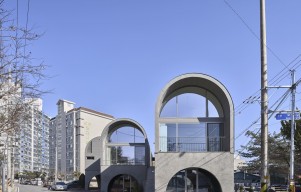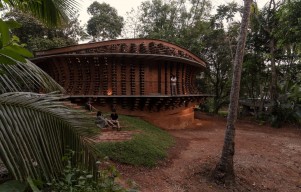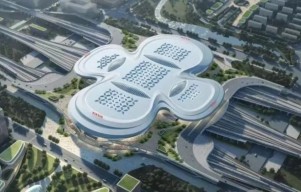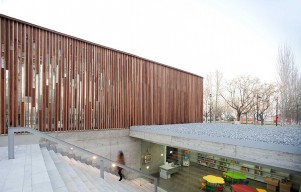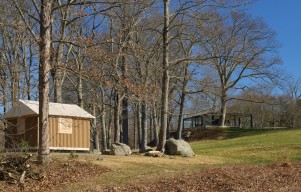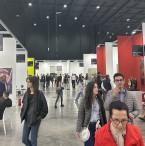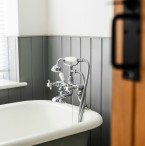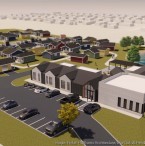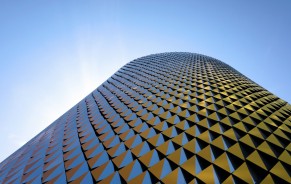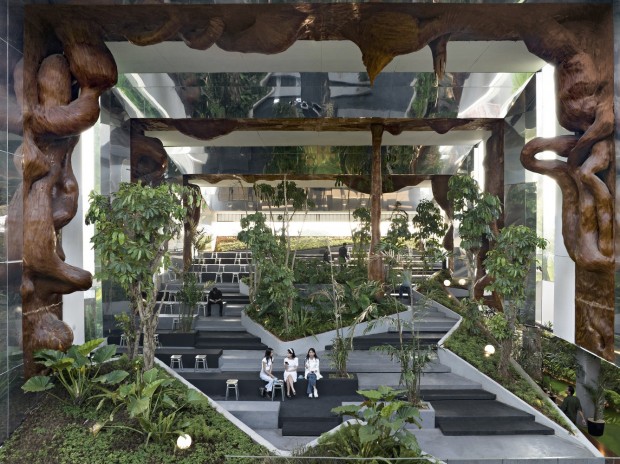
In the bustling cityscape of Jakarta, Tanatap Frame Garden Café, designed by RAD+ar (Research Artistic Design + Architecture), emerges as a groundbreaking prototype of a multi-leveled greenspace. This innovative project redefines public spaces, challenging traditional notions of architecture and inviting visitors to experience a dynamic roofscape that seamlessly connects with the surrounding public parks. This article explores the design philosophy, architectural elements, and experimental nature of Tanatap Frame Garden, demonstrating its commitment to sustainability and the fusion of art, nature, and community engagement.
Facade-less Architecture and Dynamic Platforms
Tanatap Frame Garden challenges the conventional approach to architecture by adopting a façade-less design philosophy. At the project's inception, the architects posed a crucial question: What if community activities, art exhibitions, and garden spaces became a limitless permutation of functional façade, defining the space and shaping the architecture's identity? The result is a selfless approach, creating sheltered indoor spaces within a multi-leveled garden that unfolds as a sequential experience.
The Playful Juxtaposition of Frames
A distinctive feature of Tanatap Frame Garden is the playful juxtaposition of four types of frames - stainless, artwork, GRC (Glass Reinforced Concrete), and glass. These frames enhance perspective effects, providing visitors with captivating views of the park while allowing the public to perceive the café's garden visitors as art objects within a frame. This intentional design creates a refreshing and dynamic civic space, contributing to the sustainability of business ventures in developing country cities like Jakarta.

Porosity and Sustainability
Frame Garden celebrates its porosity, acting as an open contribution to the cityscape. The building is a framed garden, offering double-shaded, low-energy indoor spaces. A rainbow skylight positioned at the garden's center allows sunset rays to penetrate the indoor café, creating a unique oasis-like atmosphere. This deliberate design choice optimizes negative section spaces, showcasing how passive, low-energy commercial designs can thrive even in challenging tropical environments.
Also Read: African Vernacular Huts: The Art of Weaving Architecture and Culture Into Harmony
Geometry and Cubes
The design of Tanatap Frame Garden explores the simplicity of basic geometry. It introduces a strong volume of cubes, intricately carved by symmetrical plans on the ground floor, contrasting with an organic amphitheater on the second floor. With no defined front or back, the building encourages approachability from all directions, taking advantage of the surrounding landscape. The frames act as catalysts for a wind tunnel effect, enhancing visitors' enjoyment of the park scenery in the breeze.
Spatial Experience and Indoor-Outdoor Integration
Upon entering Tanatap Frame Garden, visitors encounter a unique spatial experience. The ground floor features various spaces with varying heights, transitioning from a low ceiling to a 7.5m height as visitors move from the front to the back garden. Integrating indoor and outdoor spaces blurs the traditional boundaries, teasing visitors with sliced skylights and glimpses of activities in the garden above. The multi-leveled garden areas further deepen the spatial experience, encouraging visitors to explore the tropical garden setting.

Experimental Programming and User Behavior
RAD+ar approaches Tanatap Frame Garden as an experimental programming project to understand user behavior in redefined spaces. The café's furniture remains undefined, blending with the hardscape and landscape features, experimenting with how visitors define their comfort within an open space. This social experiment explores the evolving meaning of the third space in a sunken garden, adapting to the changing crowds at different times of the day.
A Public Living Room for Creativity
Tanatap Frame Garden aspires to be a public living room for the locals, offering an exciting destination for art enthusiasts. Antonius Richard, the initiator of Tanatap, envisions this space as a hub for nourishing curiosity, knowledge, and creativity. The café-gallery-commercial garden aims to decentralize sustainable buildings through sustainable business practices, aligning with the vision of creating a vibrant and transformative urban oasis in the heart of Jakarta.
Related Article: Green House Floriade by V8 Architects Rises as an Icon of Horticultural Wonder

